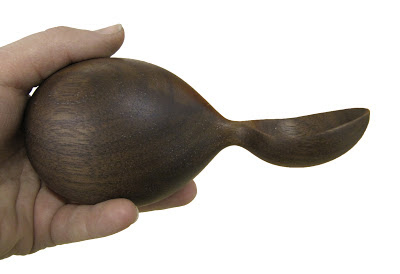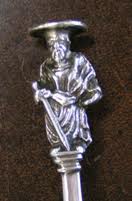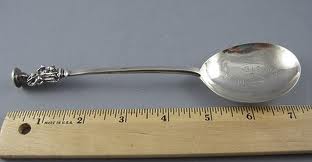I've been thinking a lot about spoons lately.
A spoon is a very personal kind of utensil. It's the first one we master.
Clay does not immediately spring to mind as a medium when one is thinking about making spoons.
Metal and wood are more commonly used, but clay spoons work just as well and sometimes better than some materials. Clay won't heat up, for instance.
And while metal and wood have their own strengths and therefore their own design requirements, people who know and understand clay could design beautiful and effective spoons with certain parameters and restrictions in mind.
Besides, spoons present unique design possibilities.
A quick Google image search with of "Ceramic Spoons" delivers a huge amount of examples.
There are lots of wooden spoon forms that could easily be translated into a clay design, although the handles would have to be heavier and thicker:
What a difference dark and light make.
This is a good form. The base of the bowl and handle join gives lots of support.

Some have interesting handles:
This handle design allows the spoon to balance on the rim of a pot.
And an antique spoon from New Guinea.
This wouldn't work with ceramic unless the bowl alone was made of clay, but it's a beautiful combination.


I love the idea of making salad spoons--Short thick sturdy handles and large bowls together.
How often do you see the two coordinated?
Next: Metal Spoons and Ceramic Ones.






















No comments:
Post a Comment